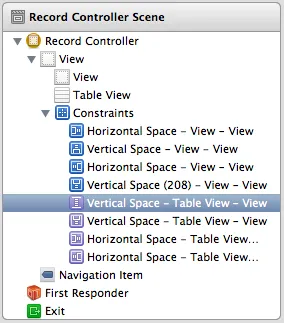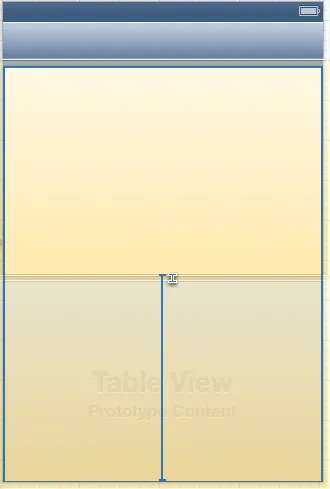自 iOS 11.0(于2017年发布)起,有使用系统间距的方法:
@interface NSLayoutXAxisAnchor (UIViewDynamicSystemSpacingSupport)
- (NSLayoutConstraint *)constraintEqualToSystemSpacingAfterAnchor:(NSLayoutXAxisAnchor *)anchor multiplier:(CGFloat)multiplier __attribute__((warn_unused_result)) API_AVAILABLE(macos(11.0),ios(11.0),tvos(11.0));
- (NSLayoutConstraint *)constraintGreaterThanOrEqualToSystemSpacingAfterAnchor:(NSLayoutXAxisAnchor *)anchor multiplier:(CGFloat)multiplier __attribute__((warn_unused_result)) API_AVAILABLE(macos(11.0),ios(11.0),tvos(11.0));
- (NSLayoutConstraint *)constraintLessThanOrEqualToSystemSpacingAfterAnchor:(NSLayoutXAxisAnchor *)anchor multiplier:(CGFloat)multiplier __attribute__((warn_unused_result)) API_AVAILABLE(macos(11.0),ios(11.0),tvos(11.0));
@end
@interface NSLayoutYAxisAnchor (UIViewDynamicSystemSpacingSupport)
- (NSLayoutConstraint *)constraintEqualToSystemSpacingBelowAnchor:(NSLayoutYAxisAnchor *)anchor multiplier:(CGFloat)multiplier __attribute__((warn_unused_result)) API_AVAILABLE(macos(11.0),ios(11.0),tvos(11.0));
- (NSLayoutConstraint *)constraintGreaterThanOrEqualToSystemSpacingBelowAnchor:(NSLayoutYAxisAnchor *)anchor multiplier:(CGFloat)multiplier __attribute__((warn_unused_result)) API_AVAILABLE(macos(11.0),ios(11.0),tvos(11.0));
- (NSLayoutConstraint *)constraintLessThanOrEqualToSystemSpacingBelowAnchor:(NSLayoutYAxisAnchor *)anchor multiplier:(CGFloat)multiplier __attribute__((warn_unused_result)) API_AVAILABLE(macos(11.0),ios(11.0),tvos(11.0));
@end
在Swift中,你可以这样使用它们:
let topView: UIView = ...
let bottomView: UIView = ...
bottomView.topAnchor
.constraint(equalToSystemSpacingBelow: topView.bottomAnchor, multiplier: 1)
.isActive = true
let leadingView: UIView = ...
let trailingView: UIView = ...
trailingView.leadingAnchor
.constraint(equalToSystemSpacingAfter: leadingView.trailingAnchor, multiplier: 1)
.isActive = true

